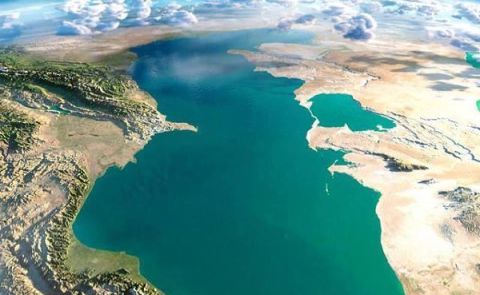
Soft power VS hard power: The diplomatic struggle of the Western world in the East

Author: Dr. Michael Lambert
Ph.D. at Sorbonne University in partnership with the INSEAD, 2016
(Geo)political scientist working on Sino-European/Russian relations and soft power in the 21st century
Although representing just over 28% of the population of the European Union, 1/9 of its GDP and 35% of the combined military budget of all member states, Moscow still stands out as a key player in the part of Eastern Europe that is not member of the EU - the “Eastern Neighbourhood” or “Eastern Partnership” - going as far as competing with the influence of Brussels and Washington in Ukraine. Against all odds, the absence of a European single army - NATO member or not - on the European continent since the failure of negotiations for the launch of the European Defence Community in 1954, to which is added the lack of international military ambitions of non-NATO countries such as Finland, Sweden or Austria, allow the Kremlin to appear as a hostile power to members of the Eastern Partnership. Russian strength - military and diplomatic - manifested with a series of coercive measures, ranging from embargoes on Moldavian wines in 2013, indirect military support in Eastern Ukraine in 2015, to the specific foreign policy regarding de facto states like Transnistria or partially recognized entities like Abkhazia.
Russian President’s famous statement "the collapse of the USSR was the greatest catastrophe of the century,” nonetheless, reflects a reality on the ground with still many post-Soviet countries in eastern Europe and Central Asia struggling since the failure of the Soviet Union to recover economic prosperity. In that context, contemporary Russia adopted both an ambiguous and fearful attitude towards Chinese economic power in Central Asia and the growing influence of Western values in post-Soviet states. To summarize the situation, Moscow is gradually seeing its economic influence diminish and now appears as a second-class partner behind China but also to be a country with antagonistic development to that of the West, the latter erecting democratic values and liberalism as fundamental principles.
In view of the current situation, the reaction of Moscow, which tries to influence its neighbours by using coercitif economic and military measures, appears like an attempt of last resort of a state facing difficulties and put at the ban of the international society after 2014.
The coercive attitude of the Kremlin in Eastern Europe seems to be a mean to temporary find a solution to Western soft power until something happens such as the rise of nationalism inside the European Union or the next politico-economic crisis in the US to give a new opportunity to reverse the situation and opinions in Ukraine, Moldova, and the Southern Caucasus.
In contrast to Russia, the European Union is trying to find a way to provide an answer to Russia’s hard power. As of today, only two member states - UK and France - may stand against Russia. However, the UK remains skeptical regarding the future of the EU’s foreign policy toward the East and France lacking the military and diplomatic expertise when it comes to breakaway territories at the moment.
Given their respective situations, one could argue that the European Union and Russia are trying to find a way to develop their respective “smart power.” Russia is trying to increase its soft power while the EU attempts to create a new kind of hard power with more military cooperation among its member states. This quest of smart power seems to be at the very heart of difficulties both for the EU and Russia since the fall of the Soviet Union.
A discrepancy between the Old Europe and the New (Eastern) Europe
In the Russian view, the Eastern Partnership policy (EaP) launched by the EU during the Prague Summit in 2009 is often presented by the Kremlin as an attempt by the Western part of the world to interfere in the diplomatic and military policies of non-EU eastern European states which tend towards friendly relations with the Russian Federation. Moscow considers the Eastern Partnership to be the tool used by the European Union - backed up by the United States - to weaken Russia’s diplomatic influence and to increase US/NATO military influence in order to exerce more pressure with a step by step long run strategy.
The reality in the EU, however, is very different with some member states supporting the idea of the EaP to decrease Russian influence - which is the case of new member states like Poland, Estonia, and Romania - and others considering it to be a mean to increase economic prosperity and renew a dialogue with Russia - France, Germany, and Danemark - without any long run strategy to integrate EaP countries in the European Union or NATO command structures.
An evidence of this phenomenon can be found in the archives of the German Foreign Office if we have a look at the statement of the former member of the German Bundestag and Federal Minister for Foreign Affairs Dr. Guido Westerwelle:
“As a strategic partner of the EU, Russia is of particular importance. Germany has always supported the intensive involvement of Russia in the EU’s Eastern Partnership. What is at stake, after all, is our common neighbourhood.
Here too, both sides only stand to profit from a cooperative agenda. In many areas in which Russia, by its own admission as well, needs modernization, Europe can supply – and export – the necessary expertise. This makes Russia and Europe natural partners in modernization.
Next week in Moscow, within the framework of this modernization partnership, I will present an initiative aimed at strengthening the rule of law”
However, speeches by new EU member states - following the enlargements in 2004 and 2007 - seem to stand out. Thus, there is the idea that the EaP is intended not only to compete with Russia in Eastern Europe, but even to eliminate the potential threat that the latter could represent. A concrete example appears in Radosław Sikorski, address by the Minister of Foreign Affairs on the goals of Polish foreign policy in 2013:
“Rome was not just limited to the Western Roman Empire, but also included the Orthodox Byzantine Empire with its constant procession of emperors until 1453. Our great countryman, John Paul II, said that Europe can only fully be itself when it breathes with both lungs – the East and the West.
And so, should the Eastern Slavic, Orthodox world one day be willing and able to adopt the legal and institutional acquis of our Union, the European horizon would extend not just to the Dnieper river, but far beyond, all the way to the Chinese and Korean borders. Poland would overcome its “periphery syndrome” once and for all and sit safely in the centre.
The West expanded as such – complete with Russian resources, the EU’s economic strength and American military might – would stand a chance of retaining influence in a world dominated by rising powers from outside Europe”
The discrepancy between statements from the Old Europe and the New (Eastern) Europe somehow explains the difficulties between Russia and the West to understand each others.
Russia’s come back in Eastern Europe
Leaving aside the question of the Eastern Partnership as an instrument of Western influence in Eastern Europe, Moscow is concerned about the gradual detachment of former Soviet countries since 1994. The reasons for this concern are reflected in the representation that Russian leaders have of they own country. Thus, we note that the Russian President, along with members of the Russian government, think the country as an alternative to the United-Stated, the European Union, and China. This portrayal of Russia as a world power prompts Russian leaders to imagine Moscow may be a viable alternative to China's in Central Asia and to the European Union in the EaP. In his speech of May 9, 2015, the Russian President did not hesitate to criticize the unipolar world and suggest an alternative to the West in order to preserve global stability.
It should be noted that the Russian response to European initiatives is similar to an action-reaction mechanism or “dipmomatico-military ping-pong” as the elites like to call it in Brussels, which is reminiscent of the prisoner's dilemma and the Nash equilibrium. Russia mostly responds to every diplomatic rapprochement between Brussels and EaP countries with an embargo, cuts in gas supplies, or laws that limit the mobility of workers to find a job in the Russian federation. The aim of this strategy is to temporary dissuade rapprochement with Europe, but it can only be a short-term solution since Russia has only a secondary economic power compared to that of Europe, then turn more slowly, but inevitably towards Brussels.
The Eastern Partnership is also divided between states and de facto/partially recognized territories. All EaP member states but Belarus have to deal with autonomous movements - Transnistria in Moldova, Abkhazia and South Ossetia in Georgia, Nagorno-Karabakh disputed between Armenia and Azerbaijan, and more recently Eastern Ukraine.
Without getting into details, the Russian leaders are betting on ethnic minorities as Stalin did after the Second World War to ensure more control over the rest of the EaP countries concerned. This specific strategy is no exception to Russia and the EU itself used diplomatic pressures in Catalonia and during the Scottish referendum in 2014, the same goes for the French propaganda regarding an independent Bavaria from Germany during the First World war. Minorities are becoming a valuable tool to destabilize the political landscape on the European continent and not only in the eastern part of it.
However, this coercive approach has been accompanied since 2015 by the proposal of participation of the EaP member countries within the Eurasian (Economic) Union format. The latter is tantamount to an alternative to participation in the European Union’s policy and as a cooperation between EaP countries and Russia who are sharing more conservative values and Soviet past. The Eurasian Union’s policy attests Moscow's desire to create a more effective soft power, the Russian leaders then content to reproduce the source of soft power of the European but in its Eurasian version, and this to give birth to a form of Eurasian/Russian smart power.
In fact, there are two key ideas in the techniques put in place by the Kremlin. The first is based on the coercive approach to block Western initiatives, which is akin to a classic behavioural scheme with a coercive response to each diplomatic action of the European Union. Meanwhile, the launch of the Eurasian Union attests to the desire to create a soft power in competition with that of the European Union, and thus to give birth to a smart power for Russia, to the extent that it has not at his disposal only a hard power.
There is a palpable paradox in that Russia, to limit EU’s soft power, is trying to make a copy of it. The name itself of “Eurasian Union” reminiscent of that of the “European Union,” and the "Eurasian Commission" resembling the “European Commission” and all initiatives are in all respects similar to those of Brussels. The strategy, contrary to that of the European Union, is quite efficient with already two new members - Belarus and Armenia - and an increasing support in Moldova and Azerbaijan.
The essential difference, however, lies in the very structure of the Eurasian Union, where Russia has a complete cultural, economic and military hegemony, which can be seen with the exclusive use of Russian as an official language. There is the difference between a European Union which is a cooperation between peoples, and the Eurasian Union, which is the projection of power from Russia to other peoples.
The Eurasian Union project then gives us a clue about the representation that the Russian leaders have of the European Union itself, that they think like a tool of projection of power from one countries on the others. It seems that the Russian leaders do not fully agree on the idea of a cooperation among members state but more on a dominant entity leading the others (possibly Germany or the United-States). The Russian views regarding the European Union establishes a parallel with the speeches of the Soviet leaders and the period of the Soviet Union where the USSR was essentially an instrument of projection of Russian power but less of cooperation and equality between the soviet peoples.
The quest for European smart power and Washington's military relevance in Europe
Russia seems to have found a way to create a form of soft power with the launch of the Eurasian Union and it appears that it manages to attract a growing number of countries. Thus, while it has only existed since January 2015, the new Union has succeeded in diverting Belarus and Armenia from any EU ambition, and is beginning to oppose a resistance against China in Central Asia, although Beijing objectively no fear of Russian economic power.
Given this situation, we find the essential idea that Moscow has managed to generate a form of “smart power,” which is imperfect but a relevant combination between the hard power of Russia and the soft power of the Eurasian Union, which gives Russia a palpable advantage against the European Union. Brussels, in fact, has only a soft power and the lack of military ambition makes it difficult to envisage the birth of a European smart power in the years to come.
Despite this obvious difficulties, the possibility of creating a European smart power is found in the combination between EU’s soft power and the United States’ hard power via NATO command structures. Washington, like Brussels, wants to defend Western values and interests and has no economic or strategic interest in letting Moscow encroach on countries in Eastern Europe and Central Asia. Since the United States is not in a position to offer the EaP countries an integration into the European Union, Washington’s policy is focused on strengthening European power by providing the hard power the EU is currently lacking. We then note that the United States, through NATO, participate in the birth of a “Transatlantic smart power” which combines both EU’s soft power and US’ hard power in response to the Eurasian Union’s smart power.
The interference of Washington then makes sense to thwart Moscow's hegemonic ambitions in Eastern Europe. But in spite of this, it is difficult for the United States and for the European Union to adopt a relevant approach as regards the implementation of the use of the ethnic minorities by Moscow in post-Soviet space. It should be noted that the bases for cooperation within NATO are not relevant to this type of “threat” with Article 5 of the Washington Treaty hardly taking into account separatism tendencies.
The interference of Washington in the European Union foreign and military policies attests to issues on the European continent, the first being the absence of a single army and high-scale military projects in the EU context, the second the obvious rise of populism and return of nationalism, the last being the denial of regional autonomy and growing regional identity as underlined by the recent referendums in Scotland and Catalonia. The mere fact that the speeches on a military intervention against Russia in Ukraine finds a favorable echo in Poland and Estonia, but less in Great Britain and France, attests to the fracture between countries which nevertheless cooperate within the same alliances. Washington proposes, through NATO command structures, to provide a temporary respite to the EU’s lack of smart power but probably not for long because of China’s rising power in the Pacific
See Also

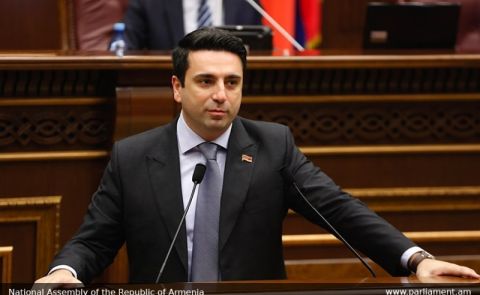
Simonyan: “Armenia Should Trade with Turkey and Azerbaijan Instead of Closing Borders”
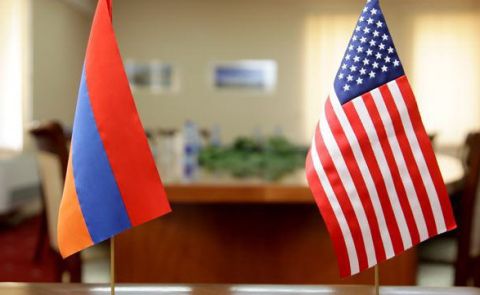
Mirzoyan Meets US Deputy Assistant Secretary Joshua Huck
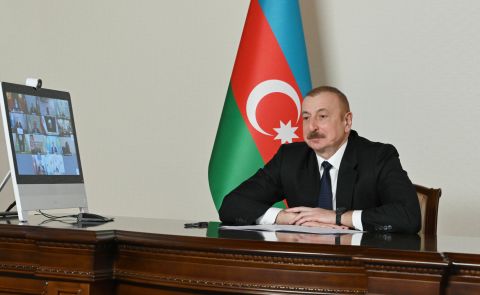
Azerbaijani President Holds Talks with UAE and German Business Delegations on Economic Cooperation
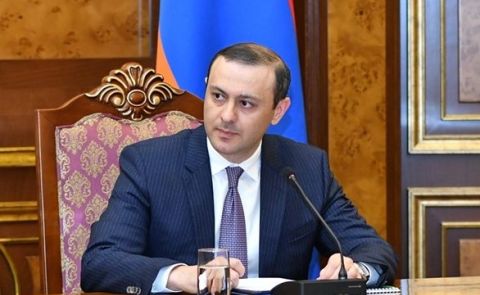
Grigoryan Confirms Armenia’s Readiness to Dissolve OSCE Minsk Group Upon Peace Treaty Signing
